When it comes to shipping goods, there are various documents involved in the process. One such document is the straight bill of lading form, which serves as both a receipt for goods and a legal document.
This article will explore what a straight bill of lading form is, why it is important in the shipping industry, how to use it, examples of its application, and tips for successful implementation.
What is a Straight Bill of Lading Form?
A straight bill of lading form is a shipping document that acts as a receipt for goods and a legal document. It provides a detailed record of the goods being shipped, the parties involved in the shipment, and the terms and conditions of the shipment. Unlike a negotiable bill of lading, a straight bill of lading is non-negotiable, meaning it cannot be transferred to another party.
The form typically includes information such as the names and addresses of the shipper and consignee, the description of the goods being shipped, the quantity and weight of the goods, the shipping method, and any special instructions or requirements. It also includes the terms and conditions of the shipment, such as liability limitations, insurance provisions, and dispute resolution procedures.
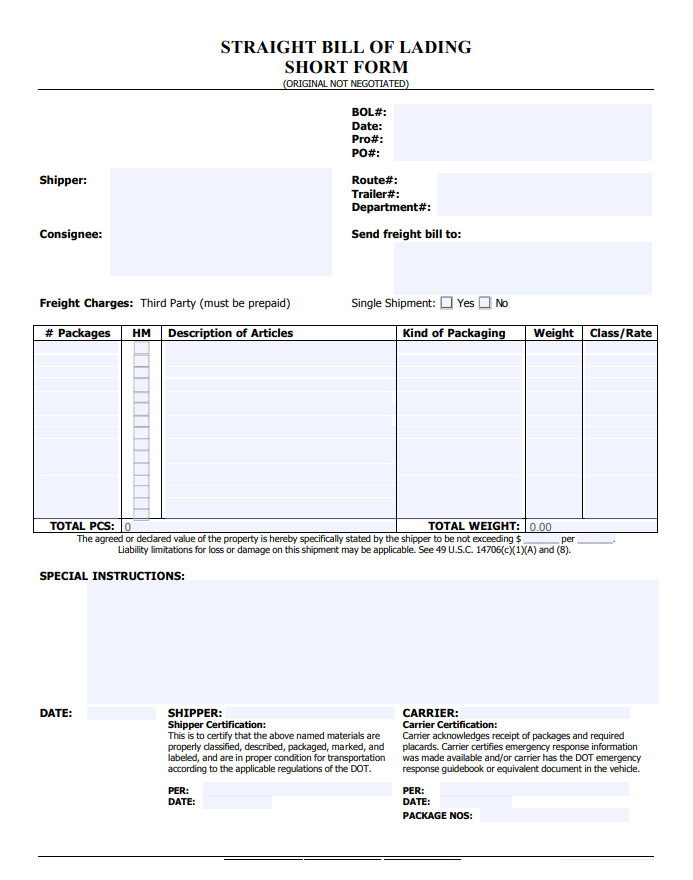
Why is a Straight Bill of Lading Form Important?
A straight bill of lading form is important for several reasons:
- Proof of Shipment: It serves as proof that the goods have been shipped and received by the carrier.
- Receipt for Goods: It acts as a receipt for the shipper, confirming that the goods have been delivered to the carrier in good condition.
- Legal Document: It provides a legal record of the terms and conditions of the shipment, protecting the rights and interests of both the shipper and the carrier.
- Dispute Resolution: In the event of any disputes or claims, the bill of lading form serves as evidence of the agreed-upon terms and conditions.
Overall, a straight bill of lading form is crucial in ensuring a smooth and efficient shipping process while protecting the interests of all parties involved.
How to Use a Straight Bill of Lading Form
Using a straight bill of lading form is relatively straightforward. Here are the steps involved:
- Download or Create a Template: Start by downloading a straight bill of lading form template or creating your own. There are various templates available online that can be customized to suit your specific needs.
- Fill in the Required Information: Once you have the template, fill in the necessary information, including the names and addresses of the shipper and consignee, the description of the goods, the quantity and weight of the goods, and any special instructions or requirements.
- Review and Verify: Double-check all the information entered to ensure accuracy and completeness. Make sure that the terms and conditions are clearly stated and agreed upon by both parties.
- Print and Sign: After verifying the information, print the form and obtain the necessary signatures from the shipper and carrier.
- Distribute Copies: Make copies of the signed form and distribute them to the relevant parties, including the shipper, consignee, and carrier. It is important to keep a copy for your records as well.
By following these steps, you can effectively use a straight bill of lading form in your shipping operations.
Examples of Straight Bill of Lading Forms
Here are a few examples of how a straight bill of lading form can be used in different scenarios:
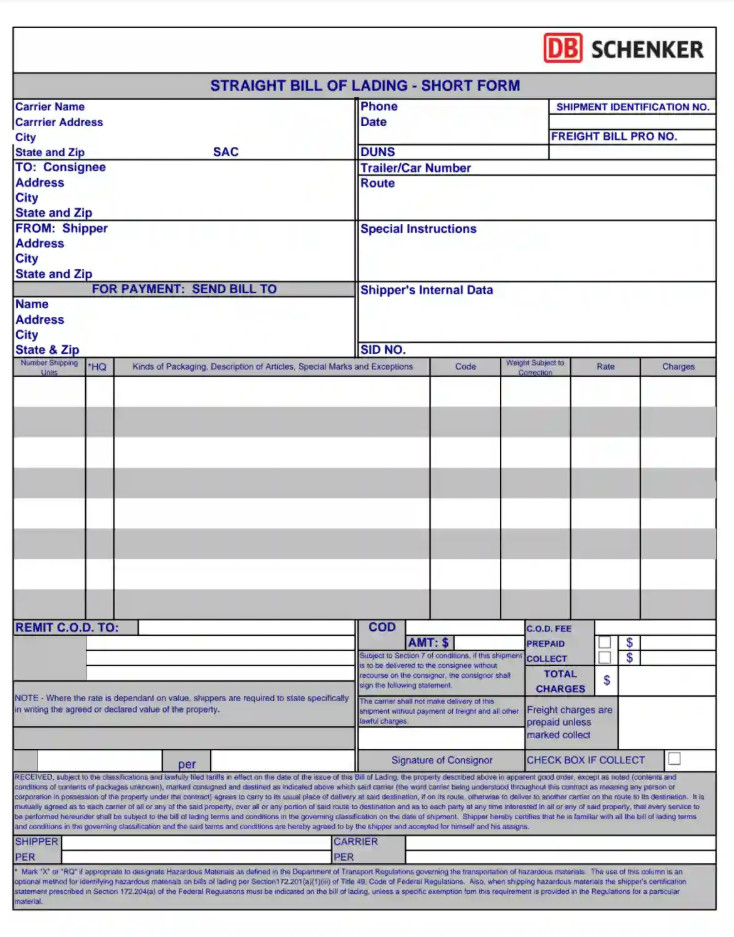
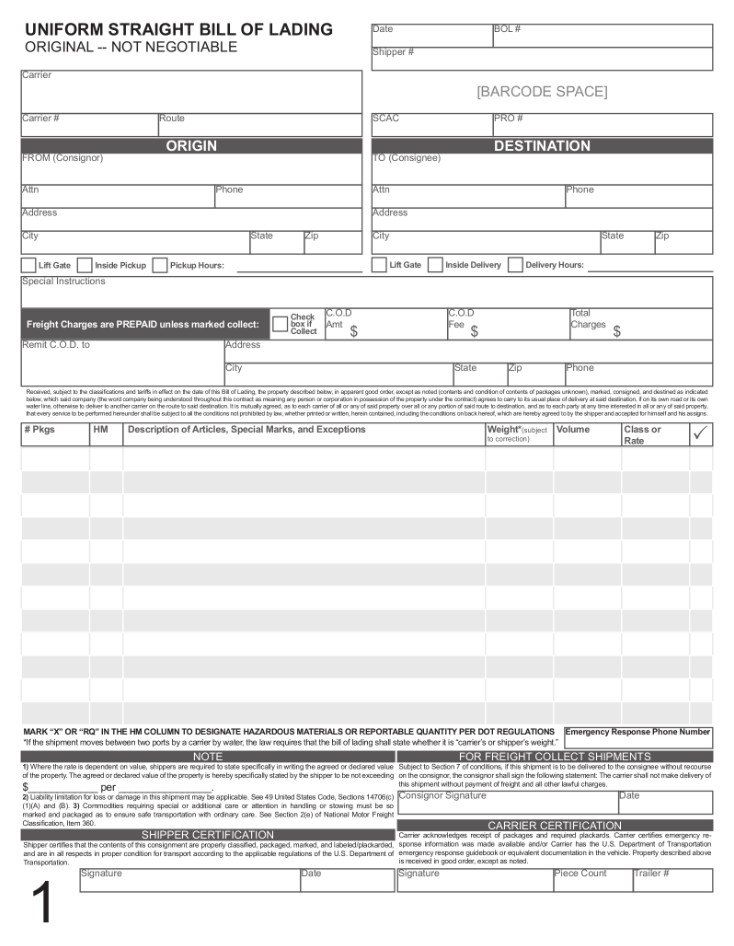
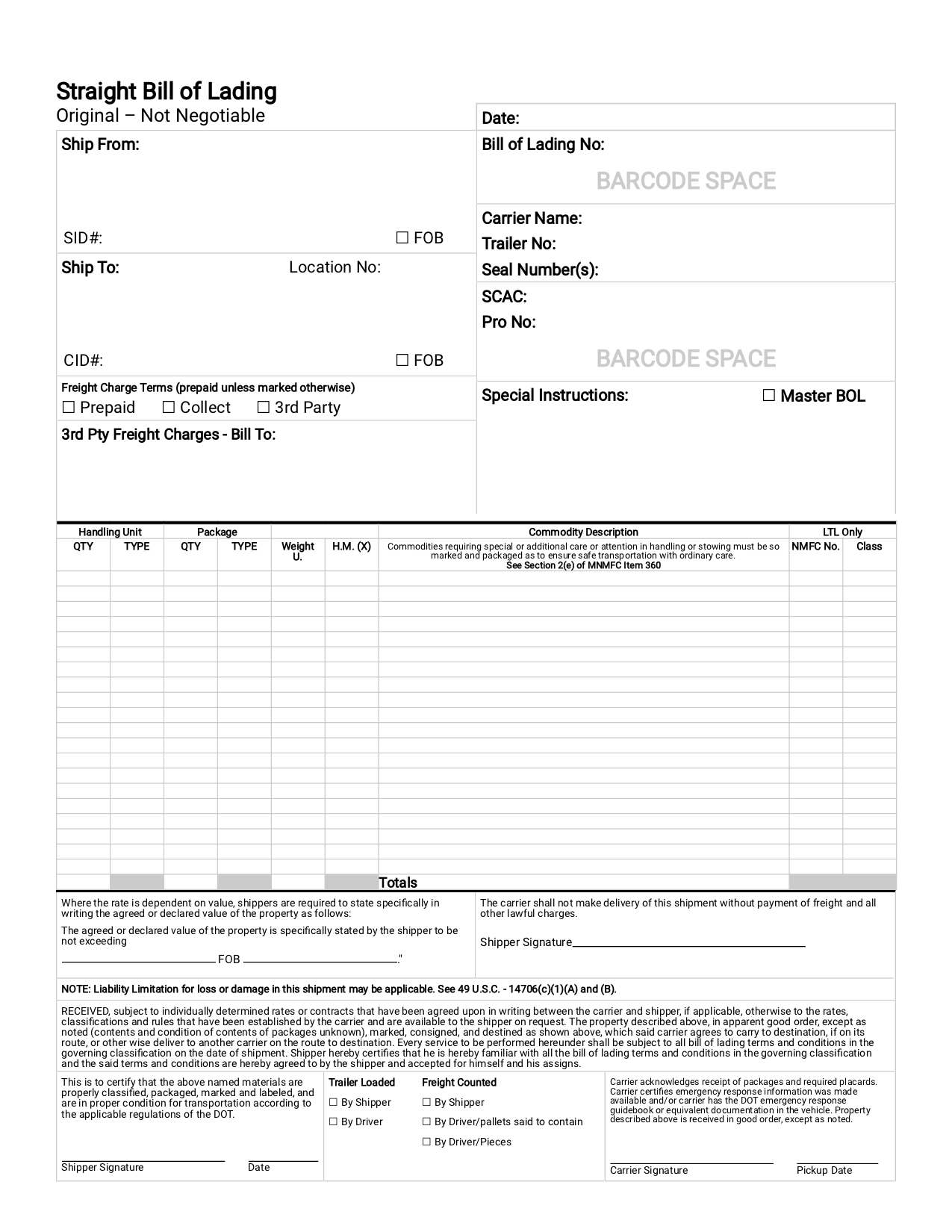
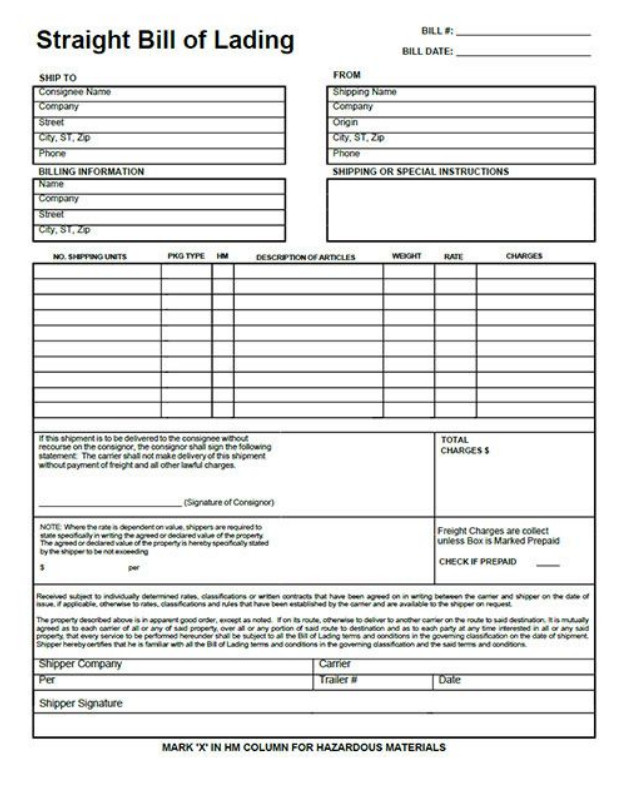
Tips for Successful Use of a Straight Bill of Lading Form
Here are some tips to ensure the successful use of a straight bill of lading form:
- Accuracy: Double-check all the information entered on the form to avoid any discrepancies or errors.
- Clarity: Clearly state the terms and conditions of the shipment, including any special instructions or requirements.
- Consistency: Use the same format and layout for all your bill of lading forms to maintain consistency and professionalism.
- Record-Keeping: Keep copies of all the signed forms for your records and easy reference in case of any disputes or claims.
- Communication: Maintain open lines of communication with the shipper, consignee, and carrier to ensure a smooth and efficient shipping process.
- Legal Consultation: If you are unsure about any legal aspects of the bill of lading form, consult with a legal professional to ensure compliance with applicable laws and regulations.
By following these tips, you can maximize the effectiveness of a straight bill of lading form in your shipping operations.
Conclusion
A straight bill of lading form is a valuable shipping document that serves as a receipt for goods and a legal document. It provides a detailed record of the goods being shipped, the parties involved in the shipment, and the terms and conditions of the shipment.
By using a straight bill of lading form, you can ensure smooth and efficient shipping operations while protecting the interests of all parties involved. Remember to use these forms accurately, communicate effectively, and maintain proper records for successful implementation.
Straight Bill of Lading Form – Download
- Free Printable Exercise Planning Template - November 24, 2025
- Free Executive Summary Template (Word) - November 20, 2025
- Free Executive Resume Template (Word) - November 20, 2025